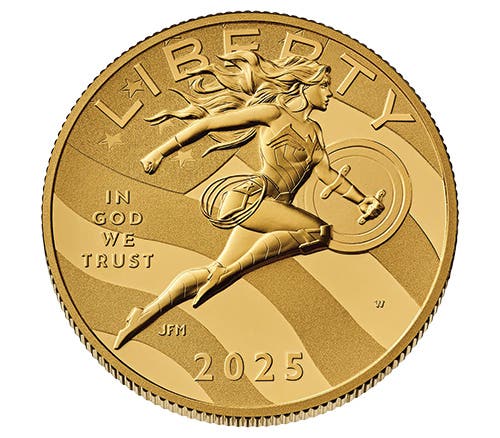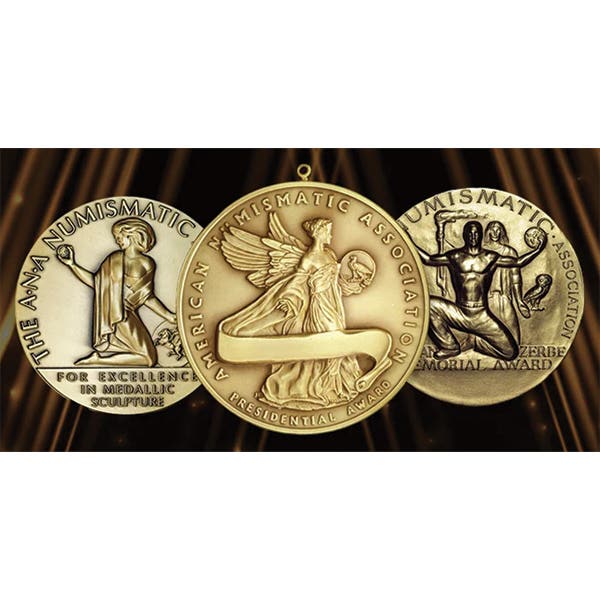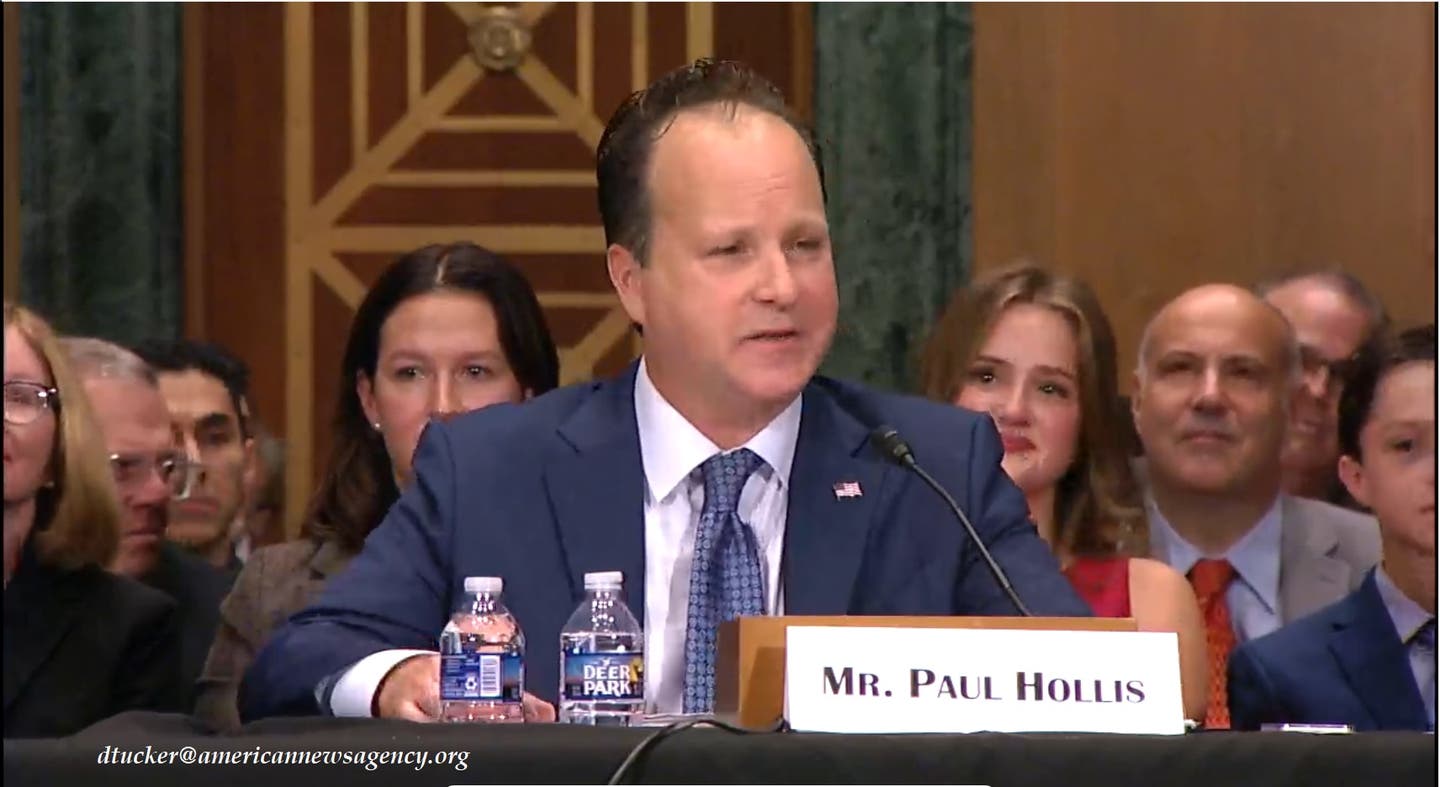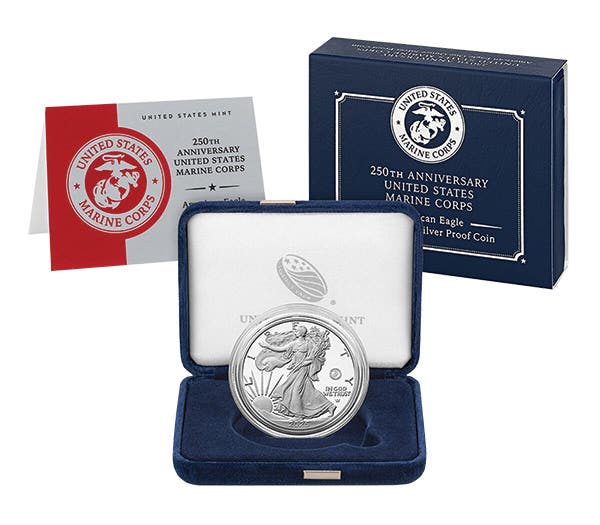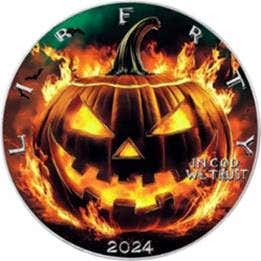Wreaths a common design element
The story of the wreath dates back to ancient Rome and Greece. A wreath is a grouping of flowers, plants, or other material that form a ring.
This article was originally printed in the latest issue of Numismatic News.
>> Subscribe today!
The story of the wreath dates back to ancient Rome and Greece. A wreath is a grouping of flowers, plants, or other material that form a ring. The circular shape of a wreath may symbolize eternity. A wreath is often used in Christmas decorations or at Advent church services before Christmas; many people may hang a Christmas wreath on their door during the holiday season.
A wreath has been used on United States coinage for many years, dating back to a Washington piece struck in 1783, known as the “Unity States” cent. The reverse of this coin bears a wreath with the inscription “One Cent.” A similar reverse was used on early federal copper coins, half cents and large cents.
Experts cannot agree on exactly what kind of plants and leaves were shown in the wreath seen on early coppers. The wreath is not a full ring and is tied with a ribbon at the bottom. Small berries can be seen within the wreath on the 1793 half cent. Half cent specialists know of different varieties of large and small berries within the wreaths used in later issues. The small berries usually denote restrikes, and the large berries, original strikes.
A popular one-year type coin is the 1793 Wreath cent, named for the large wreath on the reverse. Berries can be seen on this wreath too. The wreath used on the 1794 cents show fewer berries. Large cent collectors check out the wreaths on the reverse, for the many different varieties concerning the stems or their lack on the wreath.
The wreath on later date coppers, 1816 to the end of the series, shows a more compact wreath with a few berries.
When the small-sized cent was introduced in 1856, a Flying Eagle appeared on the obverse, and a different kind of wreath was found on the reverse: a so-called “agricultural wreath,” containing corn, wheat, tobacco and cotton, the major crops of the country. Many pattern Flying Eagle cents were struck, and these have subtle differences in the wreaths. Some designs show an oak or a laurel wreath.
Long a symbol of victory, the laurel wreath appears on many United States coins, as a major part of the design, sometimes worn by Miss Liberty. The Barber silver coins of 1892-1916 show a mannish-looking Liberty wearing a crown of laurel. The reverse of the Barber dime has the words “One Dime” surrounded by a wreath of oak, corn and wheat.
The laurel wreath was adopted for the reverse of the Indian cent in 1859, with the oak wreath taking its place in 1860. A wreath encircling the Roman numeral III is found on the nickel three-cent piece.
A wreath of cotton and corn surrounds the Roman numeral “V” on the reverse of the Liberty nickel. Many patterns were made for the Liberty nickel; differences in the mottoes, the coronet worn by Miss Liberty, and the wreath can be noted. Some patterns show a wreath of cotton and wheat. The silver half dimes of the Seated Liberty designs have two different kinds of wreaths: a simple wreath in the early years, and a more detailed agricultural wreath in the later years.
Early silver coins of the Flowing Hair type show an eagle on the reverse, surrounded by a wreath; the famous and scarce “small eagle” is also surrounded by a wreath. Specialists in early silver dollars look for the 1795 variety, showing two or three leaves under the eagle’s wing. This variety has been known for many years, and there isn’t much of a price difference between the two.
The famous and popular Morgan silver dollar reverse shows an eagle surrounded by an open wreath. This reverse design, wreath and all, was brought back in 2006 for a commemorative silver dollar honoring the Old San Francisco Mint.
Collectors of the tiny gold dollar examine the wreath on the reverse, for the open and closed wreath varieties. If that open wreath is seen on an 1849 issue struck at Charlotte, it’s a famous rarity, with only a half dozen or so known to exist.
A larger wreath, made of wheat, corn, tobacco and cotton, is seen on the reverse of the $3 gold piece.
Those who are interested in the different types of wreaths used on United States coins would do well to check out the many pattern coins. Patterns often have beautiful and meaningful designs, and a serious collector may wonder why some of these lovely designs were never used.
Students of pattern coins also learn a thing or two about striking, which sometimes gives a clue as to why some pretty designs were never used. A wreath was often used on coins to ensure proper striking of the design on the obverse. Many wreaths can be found on pattern coins, in a variety of plants and crops.
A “cereal wreath” was used on some patterns of 1859. This large and detailed wreath was made of corn, tobacco, sugar cane, corn, wheat and oak. An “agricultural wreath” was used on many pattern Flying Eagle cents and was later adopted as the official reverse design. A so-called “heavy wreath,” appearing much thicker than the average plant or laurel wreath, can be found on some patterns of 1859.
The pattern nickels of 1866 show many different designs, including a number of wreaths made up of different plants. Wreaths made of oak and laurel, cotton and corn, wheat and cotton, olive and laurel, can be seen.
Wreaths may seem old-fashioned nowadays and are not seen on many modern coins, although their beauty and symbolism are still known to numismatists. Many collectors, examining their coins for grading, note differences in the wreaths, wear patterns on the different coins, and pay more attention to the leaves and berries than would a casual observer, or someone who just looks at the grade on the slab. Some collectors may wonder what kind of wreaths would show so much detail, and study their coins more thoroughly, finding small cotton bolls or grains of corn on the coin’s wreath.
Many United States coins and pattern issues utilize a wreath as a major part of their design; while not as famous as a rendering of Miss Liberty or a bald eagle, the wreath is still a lovely way to show the major plants and crops grown in the country, or a lasting symbol of peace, victory, or strength.
2011 U.S. Coin Digest
With the 2011 U.S. Coin Digest you pick the section you need to review, open the book and let the lay-flat format do the rest!
More Coin Collecting Resources:
• Subscribe to our Coin Price Guide, buy Coin Books & Coin Folders and join the NumisMaster VIP Program




